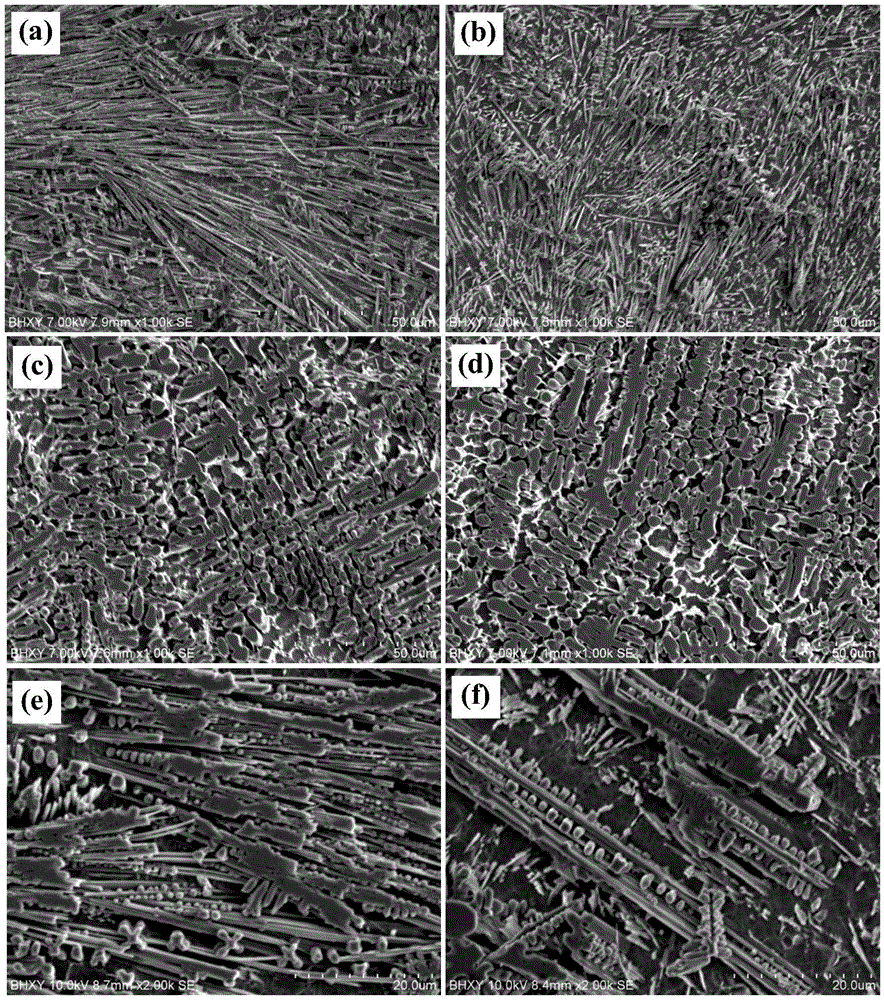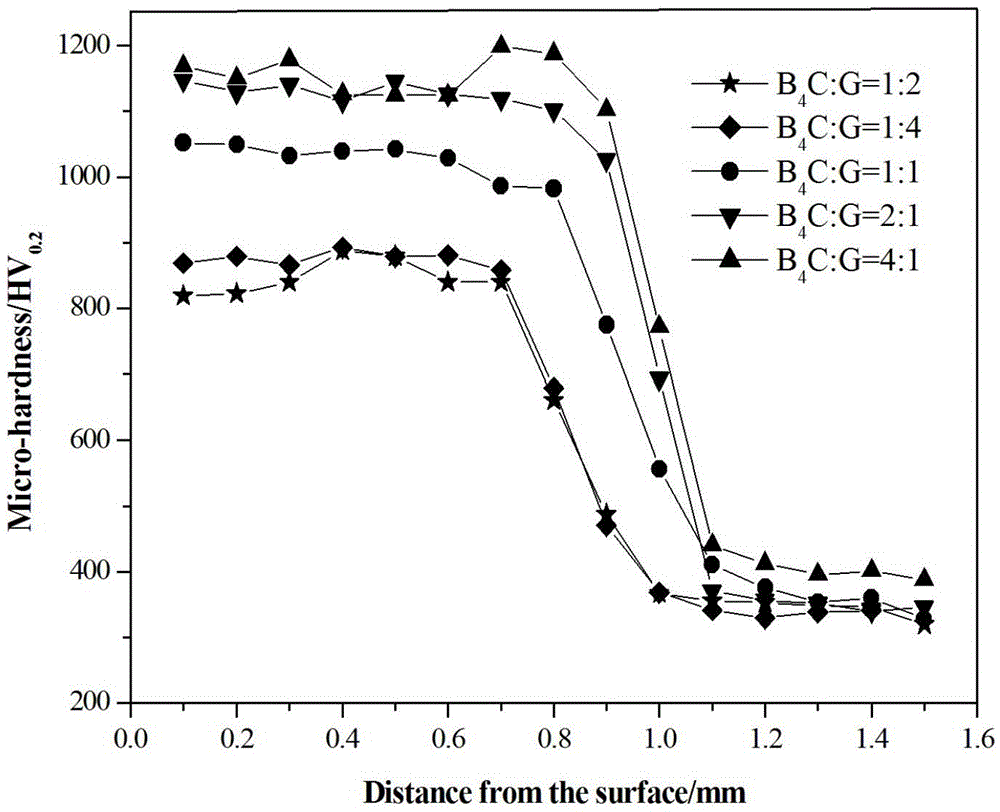A kind of multi-element laser alloying layer on the surface of titanium alloy and its preparation method
A laser alloying and titanium alloying technology, which is applied in the coating process and coating of metal materials, can solve the problems of uneven distribution of alloying elements, burning of alloying elements, and difficulty in precise control of alloying components, so as to improve process quality, Effect of suppressing cracks or cracks and improving surface hardness
- Summary
- Abstract
- Description
- Claims
- Application Information
AI Technical Summary
Problems solved by technology
Method used
Image
Examples
Embodiment 1
[0063] Cut the titanium alloy plate into block samples, use sandpaper to clean the oxide skin on the surface to be treated, clean it with anhydrous acetone and anhydrous alcohol, and dry it before use; 4 Add water glass solution to the mixed powder of C powder and graphite powder to make a paste evenly. The volume ratio of water glass to distilled water in the water glass solution is 1:3. On average, 5 to 15 drops of water glass solution per gram of mixed powder are used to make the paste mixed powder Apply evenly on the titanium alloy substrate, keep the thickness uniform, and dry naturally; use a continuous laser to scan the sample, and blow nitrogen gas during the scanning process as an alloyed nitrogen source while protecting the molten pool and the laser lens barrel.
[0064] Choose B 4 The mass ratio of C to graphite powder C is 4:1, 2:1, 1:1, 1:2, 1:4, respectively, and the mixed powders are preset on the Ti-6Al-4V substrate for laser alloying treatment. The power is 1...
Embodiment 2
[0070] Cut the titanium alloy plate into a block sample surface to deoxidize and clean and dry; the B 4 Add water glass solution to the mixed powder of C powder and graphite powder to make a paste evenly. The volume ratio of water glass to distilled water in the water glass solution is 1:3. On average, 5 to 15 drops of water glass solution per gram of mixed powder are used to make the paste mixed powder Apply evenly on the titanium alloy substrate, keep the thickness uniform, and dry naturally; use a continuous laser to scan the sample, and blow nitrogen gas during the scanning process as an alloyed nitrogen source while protecting the molten pool and the laser lens barrel.
[0071] Choose B 4 The mixed powder of C and graphite powder C with a mass ratio of 2:1 was preset on the Ti-6Al-4V substrate for laser alloying treatment, the laser power used was 1.0kW, and the scanning speed was 5mm s -1 , N 2 The pressures are 0.2MPa, 0.4MPa and 0.6MPa respectively.
[0072] Studies...
Embodiment 3
[0074] Cut the titanium alloy plate into a block sample surface to deoxidize and clean and dry; the B 4 Add water glass solution to the mixed powder of C powder and graphite powder to make a paste evenly. The volume ratio of water glass to distilled water in the water glass solution is 1:3. On average, 5 to 15 drops of water glass solution per gram of mixed powder are used to make the paste mixed powder Apply evenly on the titanium alloy substrate, keep the thickness uniform, and dry naturally; use a continuous laser to scan the sample, and blow nitrogen gas during the scanning process as an alloyed nitrogen source while protecting the molten pool and the laser lens barrel.
[0075] Carry out laser alloying treatment on Ti-6Al-4V alloy, nitrogen pressure is 0.4MPa, B in pre-coated powder 4 The mass ratio of C to graphite powder is 2:1 or 1:1, and the alloyed layer is obtained under different laser process parameters.
[0076] Table 1 Laser alloying test process parameters and...
PUM
| Property | Measurement | Unit |
|---|---|---|
| particle size | aaaaa | aaaaa |
| particle size | aaaaa | aaaaa |
| hardness | aaaaa | aaaaa |
Abstract
Description
Claims
Application Information
 Login to View More
Login to View More - R&D Engineer
- R&D Manager
- IP Professional
- Industry Leading Data Capabilities
- Powerful AI technology
- Patent DNA Extraction
Browse by: Latest US Patents, China's latest patents, Technical Efficacy Thesaurus, Application Domain, Technology Topic, Popular Technical Reports.
© 2024 PatSnap. All rights reserved.Legal|Privacy policy|Modern Slavery Act Transparency Statement|Sitemap|About US| Contact US: help@patsnap.com










